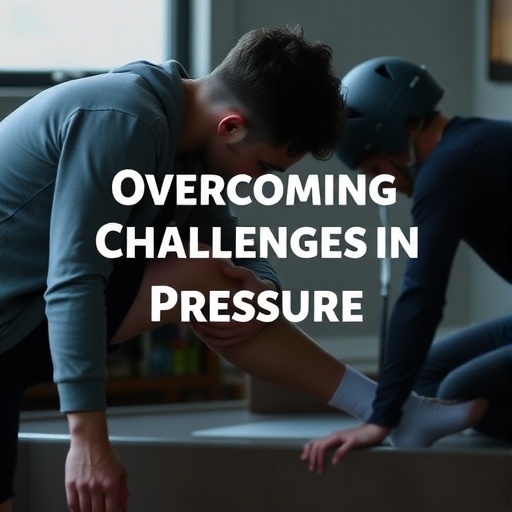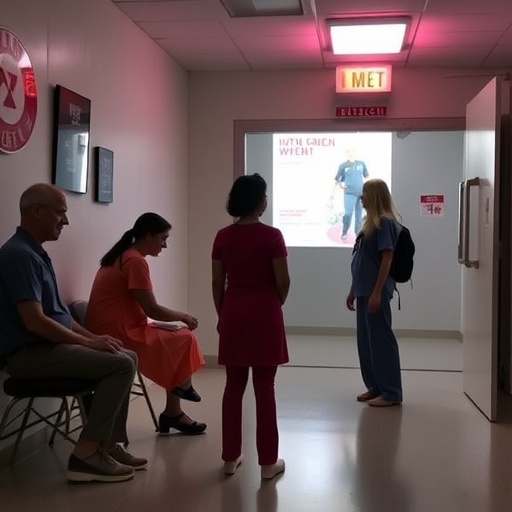In the realm of healthcare, particularly in the management of chronic conditions such as pressure injuries, the effective utilization of clinical practice guidelines (CPGs) is essential for improving patient outcomes. However, the implementation of these guidelines often faces considerable obstacles. A recent qualitative study conducted in China elucidates these barriers to integrating CPGs within clinical settings, drawing upon the theoretical domains framework to analyze the multifaceted challenges healthcare professionals encounter.
The study conducted by Shi, Chen, and Wang highlights the critical necessity of adhering to clinical practice guidelines designed for managing patients with pressure injuries. These injuries, which are a significant concern in both hospital and long-term care settings, require systematic approaches to prevention and treatment. Unfortunately, despite the existence of detailed guidelines, adherence remains inconsistent, particularly in certain healthcare environments.
Through extensive interviews with healthcare professionals, the researchers sought to uncover the underlying barriers that inhibit effective guideline implementation. The findings indicate that professional knowledge and beliefs about the guidelines play a pivotal role in their use. Many practitioners displayed a lack of familiarity with the updated guidelines, which contributes to their reluctance to adhere to prescribed practices. This knowledge gap poses a significant challenge, as it can inadvertently lead to inadequate patient care.
Moreover, the study sheds light on the influence of organizational factors on the implementation of CPGs. Participants voiced concerns regarding the lack of institutional support for adherence to guidelines. Many reported feeling isolated in their practice, without the necessary resources or backing from their employers to make changes based on CPG recommendations. This disconnect between individual healthcare workers’ efforts and organizational policies can create a chasm in effective pressure injury management.
Another critical barrier identified in this research pertains to the attitudes and perceptions of the guidelines themselves. Several healthcare professionals expressed skepticism regarding the practicality and applicability of the guidelines in their everyday clinical scenarios. This skepticism is often rooted in previous experiences where guidelines were not aligned with their clinical reality. Consequently, the mistrust in the framework of the guidelines reduces the likelihood that healthcare workers will integrate these practices into their daily routines.
In addition to personal and organizational factors, the study highlights the importance of contextual elements surrounding the implementation of CPGs. Healthcare systems can vary dramatically, and what works effectively in one region may not translate well into another. The cultural context in China, for instance, poses unique challenges that may not be present elsewhere. The need for culturally sensitive guidelines that cater to local practices and beliefs emerges as a critical opportunity for enhancing adherence.
Furthermore, the researchers explored the role of collaboration and communication among healthcare teams as a determinant of guideline implementation. Their findings suggest that fostering a culture of teamwork and open communications can facilitate better understanding and adherence to clinical practice guidelines. When team members share knowledge and engage in discussions about best practices, it creates an environment more conducive to implementing the recommended interventions for pressure injuries.
Training and education also play significant roles in bridging the knowledge gap identified within the study. Continuous professional development opportunities aimed at educating healthcare professionals about the importance of CPGs and their relevance to improved patient outcomes are crucial. The study emphasizes the need for structured training programs designed to empower healthcare workers with the skills and knowledge necessary for successful guideline adoption.
Despite the challenges highlighted by the study, there is a palpable sense of optimism regarding improving the implementation of clinical practice guidelines. The research underscores the importance of stakeholder engagement, including the involvement of frontline healthcare professionals in developing and refining guidelines. By actively participating in the guideline development process, practitioners can ensure that the recommendations are practical and relevant, enhancing their commitment to adherence.
The implications of the study extend beyond the immediate context of pressure injuries, offering insights that could apply broadly across various areas of clinical practice. Addressing barriers to guideline implementation is a universal concern within healthcare systems worldwide. The findings serve as a call to action for healthcare leaders and policymakers to consider innovative strategies that will support the integration of clinical practice guidelines into everyday practice.
Ultimately, the study conducted by Shi, Chen, and Wang illustrates that while there are numerous barriers to implementing clinical practice guidelines for the management of pressure injuries in China, there are also viable pathways to overcoming these challenges. By fostering an environment that prioritizes education, collaboration, and support, healthcare systems can improve adherence to key guidelines, ultimately leading to better patient outcomes and enhanced quality of care.
In conclusion, the implementation of clinical practice guidelines represents a complex interplay of individual, organizational, and contextual factors. This extensive qualitative study sheds light on these dynamics, revealing crucial insights that can be utilized to tackle the barriers that impede guideline adherence. As the healthcare landscape continues to evolve, understanding these challenges and developing targeted interventions becomes increasingly paramount in ensuring that best practices are integrated into patient care.
By prioritizing the collective efforts of healthcare professionals, organizations, and policymakers, it is possible to foster an environment where clinical practice guidelines are not merely documents to be referenced but integral components of everyday clinical practice. This shift holds the potential to improve the quality of care for patients with pressure injuries and set a foundation for enhanced outcomes in other areas of healthcare.
Subject of Research: Barriers to implementing clinical practice guidelines for managing patients with pressure injuries in China
Article Title: Barriers to implementing clinical practice guidelines for managing patients with pressure injuries in China: a qualitative study using the theoretical domains framework
Article References:
Shi, J., Chen, H., Wang, X. et al. Barriers to implementing clinical practice guidelines for managing patients with pressure injuries in China: a qualitative study using the theoretical domains framework.
BMC Nurs 24, 1144 (2025). https://doi.org/10.1186/s12912-025-03785-4
Image Credits: AI Generated
DOI:
Keywords: clinical practice guidelines, pressure injuries, healthcare professionals, organizational factors, implementation barriers, qualitative study, China.
Tags: barriers to guideline implementationchallenges in clinical practicechronic condition managementclinical practice guidelines adherencehealthcare professional trainingknowledge gaps in healthcarelong-term care settingspatient outcomes improvementpressure injury managementpressure injury prevention strategiesqualitative study on healthcaretheoretical domains framework





